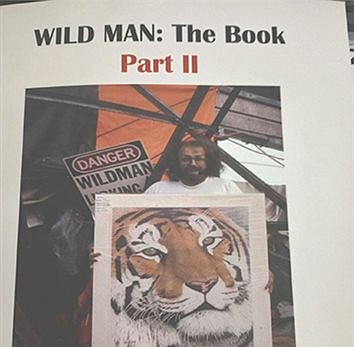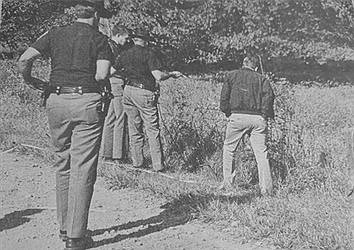Bobcat caught on trail cam in Mt. Carmel
January 12, 2024 at 10:03 a.m.

Bobcats are the only resident native wild cats in Indiana and have been reported in almost every county. Although they are most common in southern and west-central Indiana, there have been confirmed bobcat sightings in Franklin County. On Jan. 06, Franklin County resident Rex Rosenberger captured a picture of a bobcat on his property in the Mt. Carmel area.
Regardless of the population distribution, bobcats are rarely seen because of their ability to blend into their surroundings and move silently. Bobcats are quiet, secretive, and active at night, adding to their mystique. However, thanks to the increased use of trail cams, residents can view them more and more.
Seeing a bobcat on a trail cam or even during the day is not a cause for concern. The natural response of a bobcat is to move away from humans. Conflicts between bobcats and livestock are uncommon but may occur. Most reports are of bobcat predation on chickens. Landowners or lessees may request a nuisance wild animal control permit from the DNR for bobcats if damage is occurring. Landowners or lessees may also hire a nuisance wildlife control operator to assist them if they are not comfortable removing the bobcat themselves. Bobcats may not be removed without a permit.
Typical food habits of a bobcat include:
Rabbits
Mice and voles
Squirrels
White-tailed deer, especially fawns
Muskrats
Waterfowl and songbirds
General Description
Short tail, typically less than 6 inches long, is white on the bottom and black-striped on top.
Range in length from 30–50 inches, stand about 2 feet high, and weigh 15–30 pounds.
Large tufts of fur on the cheeks.
Fur is reddish-brown or tan above a white belly.
Black marks on the inside of the legs, and often black spots or streaks throughout the coat, though these are sometimes light-colored and not easily noticeable.
Bobcats may live as long as 10–12 years in the wild.
Latest News
E-Editions
Events
Bobcats are the only resident native wild cats in Indiana and have been reported in almost every county. Although they are most common in southern and west-central Indiana, there have been confirmed bobcat sightings in Franklin County. On Jan. 06, Franklin County resident Rex Rosenberger captured a picture of a bobcat on his property in the Mt. Carmel area.
Regardless of the population distribution, bobcats are rarely seen because of their ability to blend into their surroundings and move silently. Bobcats are quiet, secretive, and active at night, adding to their mystique. However, thanks to the increased use of trail cams, residents can view them more and more.
Seeing a bobcat on a trail cam or even during the day is not a cause for concern. The natural response of a bobcat is to move away from humans. Conflicts between bobcats and livestock are uncommon but may occur. Most reports are of bobcat predation on chickens. Landowners or lessees may request a nuisance wild animal control permit from the DNR for bobcats if damage is occurring. Landowners or lessees may also hire a nuisance wildlife control operator to assist them if they are not comfortable removing the bobcat themselves. Bobcats may not be removed without a permit.
Typical food habits of a bobcat include:
Rabbits
Mice and voles
Squirrels
White-tailed deer, especially fawns
Muskrats
Waterfowl and songbirds
General Description
Short tail, typically less than 6 inches long, is white on the bottom and black-striped on top.
Range in length from 30–50 inches, stand about 2 feet high, and weigh 15–30 pounds.
Large tufts of fur on the cheeks.
Fur is reddish-brown or tan above a white belly.
Black marks on the inside of the legs, and often black spots or streaks throughout the coat, though these are sometimes light-colored and not easily noticeable.
Bobcats may live as long as 10–12 years in the wild.





